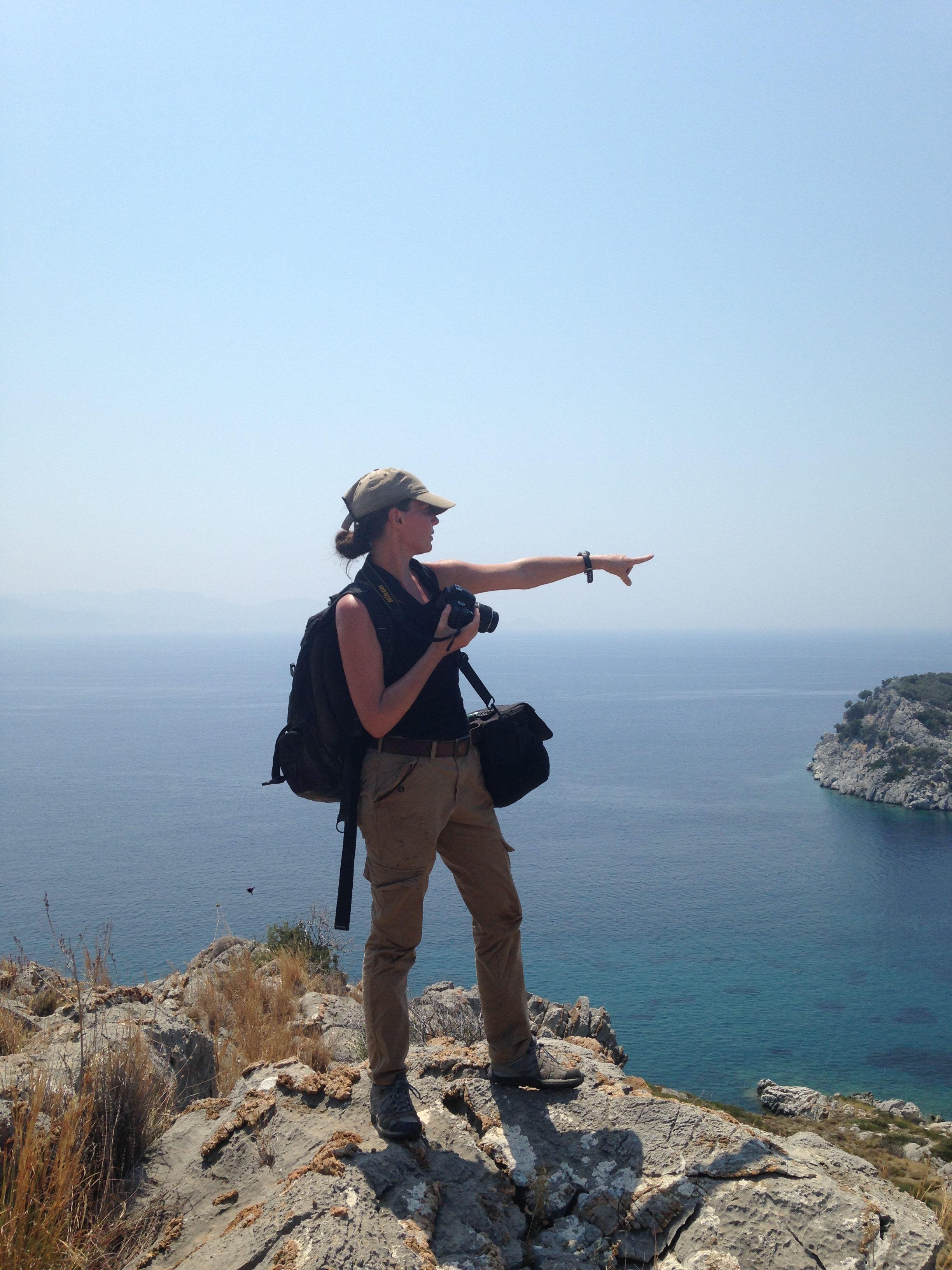Affiliation: Bishop’s University

Lana Radloff is an Associate Professor in the Classical Studies Department of Bishop’s University. Dr. Radloff is a Mediterranean Archaeologist specializing in maritime landscapes, both under and above water. She has worked on field projects in Bulgaria, Cyprus, Turkey, and Greece, and the Lechaion Harbor and Settlement Land Project at ancient Corinth. Her passion is for bringing occluded voices – to uncover the silences and the silenced – to the fore within the archaeological remains of antiquity and to utilize these voices to empower those in our contemporary communities in Canada and across the globe. Her current research project, FemiNetworX, aims to develop such an approach and apply it through the launch of a new archaeological field project in 2025 that focuses explicitly on mapping female maritime mobility networks in the ancient Greek world. Dr. Radloff is an AIA McCann and Taggart Lecturer for 2022/2023.
In the 497 BCE, Hecataeus advises Aristagorus of Miletus to use the island of Leros as a place of refuge and fortified camp in the event that the Persians win the Battle of Lade (Hdt. 5.125). Lying roughly 60 km southwest of Miletus by sea, the island is strategically located between the coast of Asia Minor and the Cyclades with good harbors and a mountainous topography suitable for defense. From there, Hecataeus states, the Milesians can safely regroup and prepare to retake their city and territory. Nevertheless, Aristagorus does not heed Hecataeus’ advice: the city falls in 494 BCE and is sacked by the Persians, its women and children are sold into slavery, and the surviving men are relocated to Susa and the mouth of the Tigris River. But a small number of Milesians survive at Leros, Teichioussa, and Kalabaktepe, Leros being chief among these as attested by the Athenian tribute lists of 454/3 BCE (Thonemann 2011: 284). In this talk, I explore the phenomenological and experiential aspects of forced migration by land and sea, drawing on ancient literary sources and accounts of refugees past and present. Digital models of the potential pathways and seaways between Miletus and Leros are reconstructed with ArcGIS and network theory that take into consideration the differential effects of seafaring patterns and navigational concerns such as winds and currents. Although born out of the tragedy of war, these models illustrate the persistence, resistance, and resurgence of refugee communities in antiquity. ***Sensitive Content***
While scholarship on ancient seafaring and maritime networks has grown substantially since the new millennium, the role of women in the creation and maintenance of these networks remains underexplored. Women were important contributors to the domestic economy and key agents of religion, nested within overlapping and multiscalar Mediterranean-wide networks. They were also, as commodities themselves, part and parcel of forced migration through armed conflict and – willingly or not – marriage and motherhood. In this paper, I examine the agency of women as drivers of mobility networks between ancient Miletus and the Milesian islands (Leros, Patmos, Lepsia) in the southeast Aegean, which was well-situated to benefit from the expanding networks of the period due to its location on the sea-lanes to the Black Sea and Eastern and Western Mediterranean and the overland and riverine transportation routes to inland Anatolia and the east. To do so, I draw upon feminist geography, mobility and migration theory, and Indigenous gynocentric methodologies, and integrate them with traditional approaches to maritime navigation, such as GIS and network theory. Although temples, altars, and sanctuaries to female deities situated on conspicuous promontories and coastlines within the maritime landscape have traditionally been viewed as functions of the male sphere, I contend that there is a second, double-reading: the preponderance of female, foreign and domestic maritime deities suggests that they are also reflective of the condition of mobile women and their liminal moment of transition on the sea.
“Like ants or frogs around a pond,” the ancient Greeks settled along the coast of the Mediterranean Sea for access to maritime resources and transportation and communication networks (Plato Phaedo 109b). Archaeological remains of such settlements are tucked away in pockets protected by the natural topography of the undulating coastline and on promontories overlooking important sea routes. These artifacts also represent the movement of seafarers, who hopped from harbor to harbor on ships as they exchanged goods, services, and knowledge. Their repetitive movement wrote, rewrote, and overwrote patterns within the land- and seascape in a complex reciprocal process that was often echoed by and/or in response to changes in urban plans, settlement relocation, and the utility of harbors as interfaces between land and sea. In this paper, the term maritime chora is used as a tool for understanding the interconnectivity of distinct spaces and the mechanisms used to create and to formalize maritime space within the polis and the psyche of its residents. I argue that the integration between terrestrial and maritime spheres at Hellenistic Miletus brought maritime space into the territory of the Milesian polis and created a defined maritime “place,” the maritime chora. The quotidian practice of navigating on the sea visually constituted the seascape as place through the utilization of natural markers that were enhanced with manmade structures, embedding the maritime sphere with Milesian identity and memory.